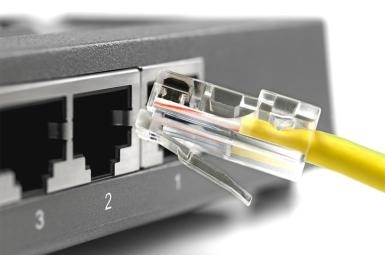- Related articles
- Applicable to 100BASE-EX Standard Optical Transceiver Models
- Optical Transceivers for Cisco SF200-24FP-EU Switch
- The difference between DWDM and OTN
- Optical Transceivers for Cisco SF350-48-K9-EU Switch
- Optical Transceivers for Cisco SF300-24PP-K9-EU Switch
- What is a BiDi transceiver?
- Optical Transceivers for Cisco SG300-10MPP-K9-EU Switch
- All Cisco DWDM-XFP-54.94's information (List price, Specs, Datasheet PDF, Compatibility ma
- What are modes in optical fiber?
- All Cisco DWDM-XFP-42.14's information (List price, Specs, Datasheet PDF, Compatibility ma

Definition:
Ethernet is a family of computer networking technologies commonly used in local area networks (LANs) and metropolitan area networks (MANs). It was commercially introduced in 1980 and first standardized in 1983 as IEEE 802.3, and has since been refined to support higher bit rates and longer link distances. Over time, Ethernet has largely replaced competing wired LAN technologies such as token ring, FDDI and ARCNET.
What Is Ethernet Port Aggregation
Port aggregation lets you combine two Gigabit Ethernet ports on the Nighthawk router to improve the aggregated file transfer speed. If a device supports Ethernet aggregation like a NAS or managed network switch, you can use the Ethernet aggregate ports 1 and 2 to cable the device to your router. Ethernet port aggregation is also referred to as link aggregation, teaming port, and port trunking.
Aggregating multiple links between physical interfaces creates a single logical point-to-point trunk link or a LAG. The LAG balances traffic across the member links within an aggregated Ethernet bundle and effectively increases the uplink bandwidth. Another advantage of link aggregation is increased availability, because the LAG is composed of multiple member links. If one member link fails, the LAG continues to carry traffic over the remaining links.
What Is Ethernet Port Number
A port number is a way to identify a specific process to which an Internet or other network message is to be forwarded when it arrives at a server. For the Transmission Control Protocol and the User Datagram Protocol, a port number is a 16-bit integer that is put in the header appended to a message unit. This port number is passed logically between client and server transport layers and physically between the transport layer and the Internet Protocol layer and forwarded on.
What Is Ethernet Port on Laptop
It's the standard non-wireless way to connect to a DSL modem, cable modem, a corporate network, or the lame wired network at the mediocre hotel you happen to be staying at. Network cables plug into the RJ-45 connector on your laptop. Almost all laptops ship with a 10/100/1000 Gigabit Ethernet port nowadays.
Conclusion:
An Ethernet port is an opening on computer network equipment that Ethernet cables plug into. These ports are alternatively called jacks or sockets. Ethernet ports accept cables with RJ-45 connectors.
Most computers include one built-in Ethernet port for connecting the device to a wired network. (A notable exception, the MacBook Air, does not but allows connecting an Ethernet dongle to its USB port.) A computer's Ethernet port is connected to its internal Ethernet network adapter.
Please click to check more related concepts:
| Network | Ports | IEEE standard |






































































